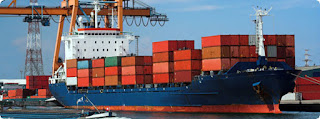Interesting Facts about Bulk Cargo Shipment
If you are seeking to bulk cargo; for instance Excess Baggage to Pakistan then it is an easy guess that your cargo would be transported by waterborne cargo in a bulk carrier. Sea cargo is indeed one of the most economical ways to freight forward goods internationally (for bulk cargo).
The first bulk cargo shipment that was introduced in 1852 by John Bowes was a huge achievement in freight forwarding. As the time passed by, through research and development; bulk cargo has become significantly safer and efficient.
There are different kinds of ships that are used to transport bulk cargo. Panamax ships and Capesize vessels are one of a few to name. Ships that use their name as ‘Panamax’ originally came into existence because these ships are like vessels that are easily fitted in the locks at the Panama Canal. It is said that through renovation and other developments; Panama Canal will be able to pass even bigger vessels in the upcoming future. However; large vessels will require significantly deeper water levels to accommodate them properly which is not available always.
The equipment that are used are typically ‘specially made for bulk cargo’. These special equipment consist of large cranes and conveyor belts to load and unload the bulk cargos.
Intermediate Bulk Cargos or IBC are used to ship items like liquids, for example. The containers of IBC are different from the traditionally common ones. They are either made out of steel or plastic (depending on the goods). For liquids, drums; that are cylindrical shaped containers, are used to contain the liquid. These types of materials require climate controlled containers to maintain their quality and stability of the product.
Consider having a consult with a professional firm that can assure you with safe and efficient bulk cargo shipment. Pak Direct Cargo is one of the companies that I recommend for overseas.

0 comments:
Post a Comment